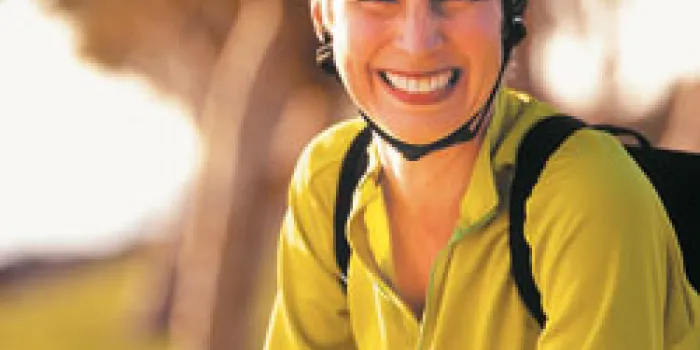Bob Stribula, 59, has been biking for about half a century. He has no plans to stop. From spring through fall, he spends at least half an hour daily on his 12-speed road bike. Because of health problems related to his severe hemophilia A, Stribula is not as physically active as he would like. Fortunately, biking is a very low impact exercise. It puts little strain on joints. That makes biking an ideal activity for many people with hemophilia or another bleeding disorder.
“It gets me outdoors, and it is great exercise,” says Stribula, who lives in Nesquehoning, Pennsylvania. “Riding is a part of me now.”
Kay Craig, PT, an avid biker, recommends the sport to many of her patients at the Idaho Regional Hemophilia Center at St. Luke’s Regional Medical Center in Boise. “Calves, quads, hip flexors, hamstrings, shoulders, neck—you use a lot of muscles when you are riding,” says Craig. “It is a really thorough workout, and it is something that you can do throughout your life.”
Where you go riding is up to you. “I don’t have a lot of strength in my legs now, which means I can’t ride up hills,” Stribula says. “I do about 200 laps up and down my street.”
Craig recommends riding for 30 minutes four to five days a week to get and stay in shape. If you are new to biking, she suggests you take short rides of no more than 10 or 15 minutes for at least the first week.
“Biking uses a whole different set of muscles than swimming or other exercises, so take it easy as you build up your endurance,” Craig says.
To keep fit in the off season, Stribula rides a stationary bike.
Before You Bike
In the National Hemophilia Foundation's Playing It Safe: Bleeding Disorders, Sports and Exercise booklet, bicycling is rated safe to moderately risky. But there are several safety issues to keep in mind when considering where to ride. First, be proactive when it comes to cars.
“Cars are your greatest risk,” says Craig. “Don’t assume that drivers can see you.” Obey all traffic rules.
When possible, choose bike paths with wide shoulders, where you can stay away from traffic. If you want to ride in parks or other off-road areas, Craig says, choose wide-open and well-maintained trails. Ask the professionals in your local bike shop to suggest off-road trails that are good for beginners.
Also, before you start pedaling, make sure your bike is the proper size. “A bad fit can cause hip, knee and back problems,” says Craig.
With so many bikes for different purposes on the market, there is no one-size-fits-all formula for determining the best fit for you. Craig deters her patients from shopping on the Internet or at large outlet stores. Instead, head to a bike store, where you will find employees whose training and experience can guide you to the right bike.
If you already own a bike, your physical therapist or the experts at a bike shop can help you determine if it’s the right size. Check your seat and handlebars: If your seat is too high, it will strain your hips. Too low, and it will strain your knees. Poorly positioned handlebars can wreak havoc on your neck and shoulders.
Once you have gotten your bike ready, it’s time to decide what to wear. Helmets are essential. Buy one that is approved by the American National Standards Institute or Snell Memorial Foundation. Other gear is worth considering, too. Lycra biking shorts have thick padding that cushions your backside—a necessity on long rides. Padded biking gloves absorb shock and help keep sweating hands steady on the handlebars. A water bottle will provide valuable hydration if you’ll be riding for a while or if it’s hot and humid.
But you don’t need any fancy equipment to hit the road pedaling. To have fun and get a great workout, all you really need is a helmet, a bike and a bit of road to ride it on.
“My knees and legs feel better after riding,” says Stribula, who pedals in his street clothes. “I’m tired, but in a good way.”

